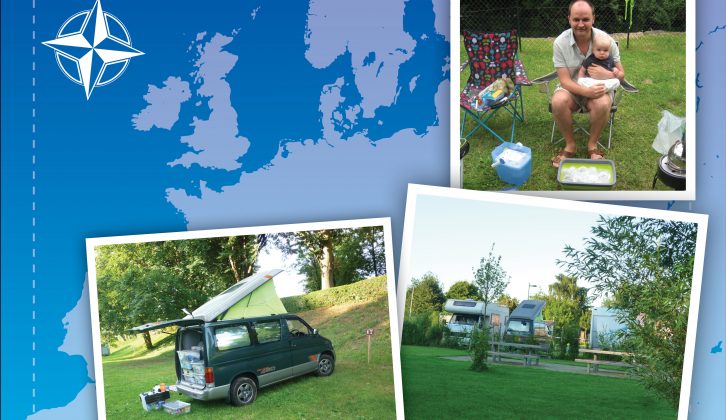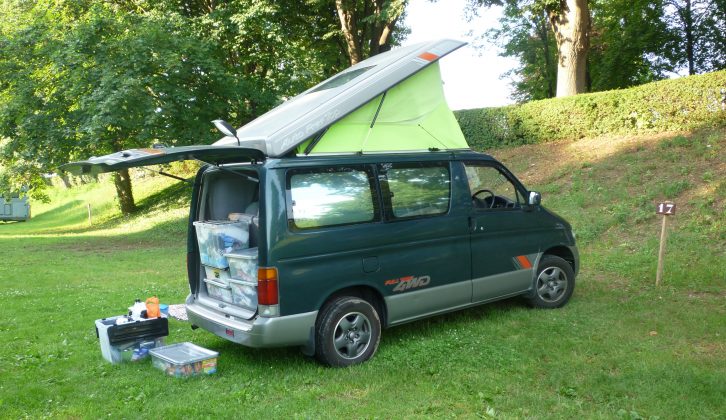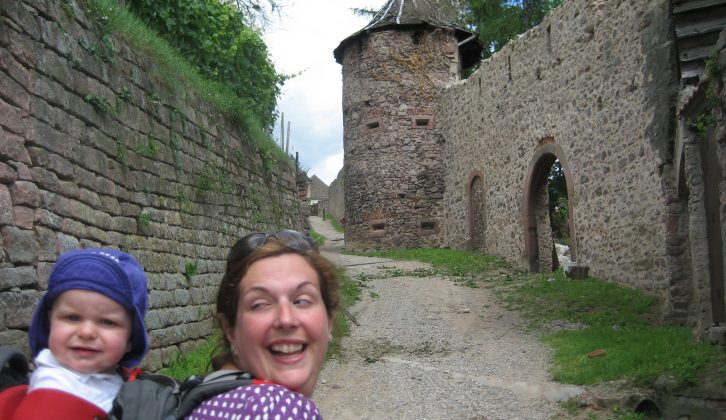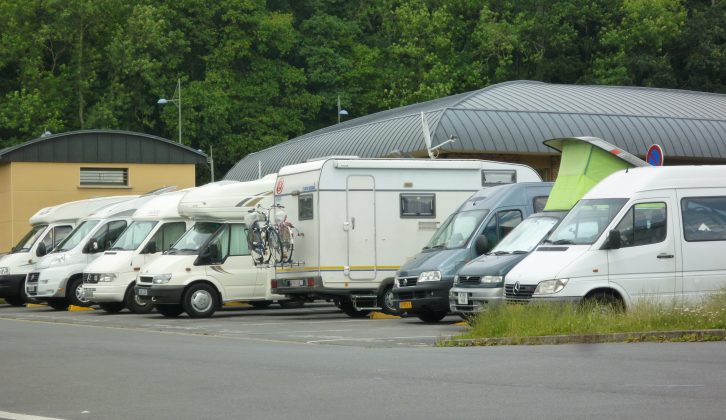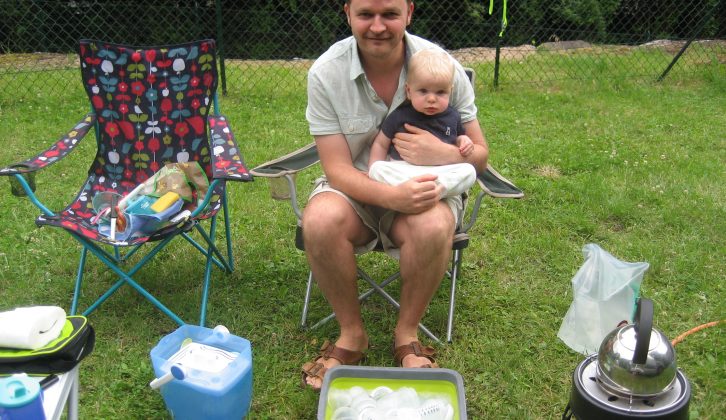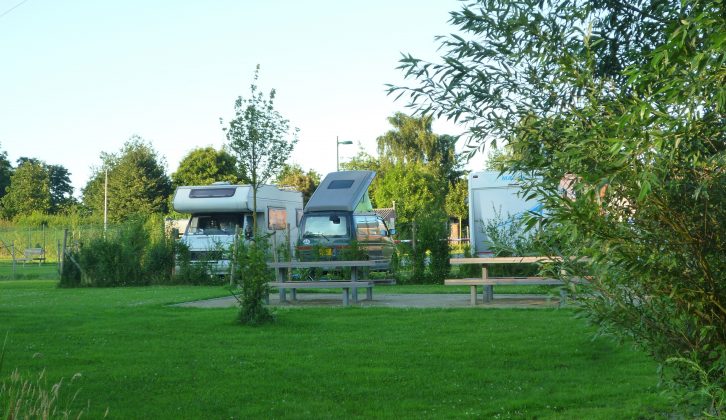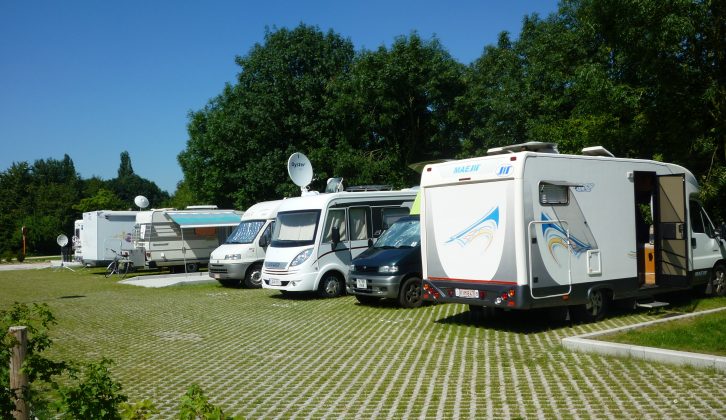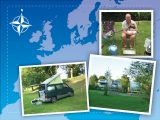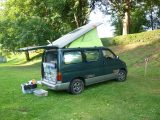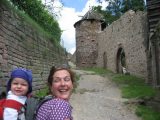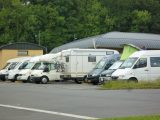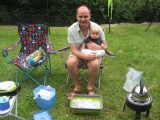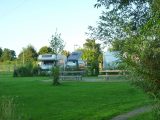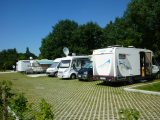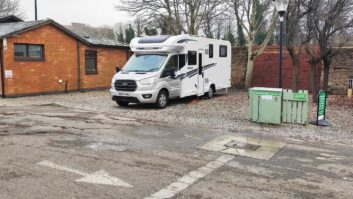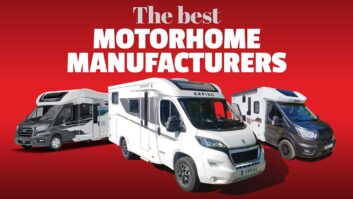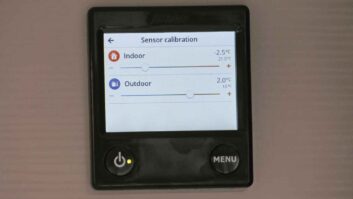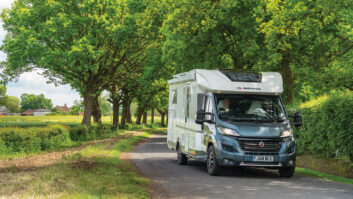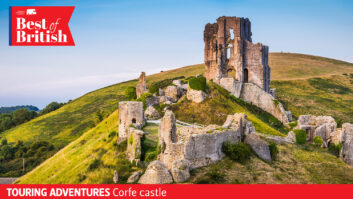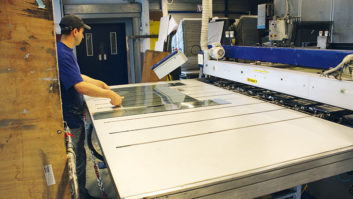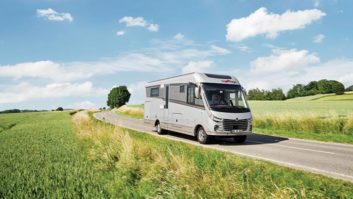By day 17 of our 40-day tour of Europe we had already packed in a drive through France and over the Alps into Italy, a few nights in Slovenia, a drive through Austria and a short stay in Germany, as you can read in our earlier blogs.
Though we’d had fun in our trusty little bog-standard unconverted Mazda Bongo Friendee – that is me, my partner Ellie and our baby son Harry – we had tried to see too much. We realised it was time to slow down and give ourselves, and the 16-year old Bongo, a much-needed rest, so we decided to head back into France.
After driving from a campsite near Munich we landed in a lovely little riverside spot at Colmar in the Alsace region. We were now determined to give up our habit of stopping in places for just one night – packing away our mountain of kit every morning had become just a bit tiresome. It had taken us 17 days on the road to fully appreciate that we were trying to do too much.
Alsace, with its lovely wine route and countless historic villages, was the perfect antidote to our restlessness. At the Camping de l’Ill in Colmar we even managed a two-nighter! The riverside setting was relaxing and it was an easy jaunt into Colmar town with Harry in his pram.
Following La Route des Vins d’Alsace took us to Ribeauvillé where we spotted a sign for a site called Camp Municipal Les 3 Châteaux. Finally, we had found the Holy Grail! Yes, it was basic and very small, but at €5 a night it was just what we were looking for.
The walk into Ribeauvillé was fairly flat and not too far, and the village had a decent shop where we could stock up on cheese, tomatoes and crusty bread, which was to become our staple diet en France.
We fell in love with this little corner of Alsace so decided to stop here for five nights. For Harry, there was a little stream for paddling and, each morning, fresh pains au chocolat were delivered to the campsite admin hut. Perfect!
On what turned out to be one of the hottest days of the five, naturally we decided to attempt the tricky trek to one of the three castles that gave the site its name. With Harry snoozing in his backpack carrier (a must if you are walking on rough terrain), we set off. An hour later we were rewarded with the stunning views from the top of the castle.
Our stay in Ribeauvillé made us so carefree we even visited a restaurant, throwing caution to the wind by ordering the local speciality, Quiche Lorraine, and a few drinks.
After our five nights here, it was time to head for Nancy. We had read about its famous square, Place Stanislas, “the most beautiful royal square in Europe”. But after a few wrong turns and a screaming fit from Harry, we gave up. Fortunately, Camping Campéole Le Brabois at Nancy had a useful baby bath which was luxury for Harry, who was more used to having a bath in a little washing up bowl.
On day 26 we spotted Lac de Madine on the map which looked very promising. Sadly, it was practically deserted when we arrived. Apart from two other ‘vans and a single windsurfer, we were all alone on a vast site which could easily have hosted 1000 holidaymakers. Although it was a weekday, it was mid-July and so not exactly out of season. But on we went.
There’s never a good time to run out of gas, is there? And, when in France, 14 July, Bastille Day, is surely one of the worst. But it was then we ran out of cooking gas as we set up camp at Camping Le Paquis in Varennes-en-Argonne. That night we dined on cold lentils and sausages from a tin, with crusty bread and goats’ cheese on the side, as the fireworks lit the sky out of our rear window.
Day 28 saw us head for Charleville-Mézières, capital of the Ardenne department. We had a lovely fruit beer while sitting in the city square, Place Ducale. There’s a good campsite, Le Mont Olympe, and a free aire next to it.
It was at the aire where we met an eccentric Dutch couple whose DIY ‘van contained a portable loo right next to a full-sized cooker in a bizarre ‘open-plan’ experiment. The Dutch ‘van dwarfed our little Bongo, but there were no pangs of jealousy this time.
We then headed north, calling at towns and villages synonymous with the two World Wars, with overnight stops at Péronne and Violaines. I found the war museums, cemeteries, bomb craters and trenches endlessly fascinating, but Harry preferred ice creams and sand, so we headed for Bray-Dunes, a coastal town on the France-Belgium border.
The Camping Perroquet site at Bray-Dunes was great for little ones, with lots of space for cycling and with super playgrounds. But, sadly, a trip to the beach was cut short when high winds tried to carry away the pushchair.
The following day we drove to De Panne, over the border in Belgium. It’s a country sometimes labelled as boring, but for us it was just wonderful, being very peaceful, motorhome friendly and with plenty to see. In fact, we loved Belgium so much we spent a week exploring, visiting Bruges and Ghent, which are equally beautiful.
By the final week of our six-week trip the funds were running low. But we need not have worried as the Belgians have some very useful stopping points called Kamperautoterrain. Some of these stopping points have toilets but ours didn’t, which meant we had to pop into cafés when nature called. In hindsight, we probably ought to have taken a portable loo, just for emergency use.
We paid €5 for three nights at the Kamperautoterrain at Zulte, a quiet little village where you can sit and watch the wildlife on the river. If you enjoy pottering around doing very little, these Belgian villages are ideal.
The Kamperautoterrain at De Balokken, Wervik, is another picturesque spot. There’s a wide river with big barges and open grassland, ideal for a walk with a pushchair.
Clutching our last €50 note, we headed to Memling campsite in Bruges, which we had pre-booked, for our final night on the Continent.
As we drove onto the ferry, we were looking forward to home comforts, but sad that our adventure was almost over.
By this point, it felt like the Bongo was a member of the family. It wasn’t the most comfortable, most spacious or most convenient campervan in town, but it hadn’t let us down and had allowed us to venture to places where bigger ‘vans might have got stuck.
And back home in Huddersfield it has become our everyday vehicle, doing the supermarket runs and nursery trips, but also ready at a moment’s notice for our next adventure.
We’d had a brilliant tour, made memories to last a lifetime and we’d not broken the bank. We hope we might inspire you – if we can do it, anyone can!
There's never a good time to run out of gas, is there?
